

An ounce of information
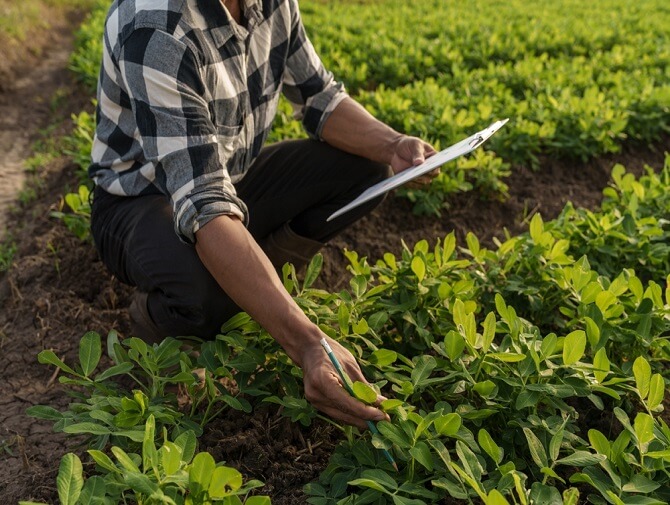
Article by Pnut King
Published on 04/10/2023 in Peanut Farming
Peanuts are an ideal farming crop, and are grown extensively in tropical and subtropical regions. Here are the basics for delivering a high-quality harvest
Groundnut agriculture, also known as peanut farming, is a prominent industry in Asia, particularly in countries like India, where it ranks as one of the top oilseed crops. India holds the distinction of being the second-largest groundnut producer globally, just behind China. Groundnuts are cultivated as an annual herbaceous plant, and they belong to the Fabaceae family and Arachis genus. This versatile crop thrives in tropical and subtropical regions and can grow up to 50 cm in height.
The significance of groundnut agriculture is underscored by its wide-ranging applications. Groundnuts are commonly processed through methods such as roasting, grinding to produce peanut flour, or crushing to extract valuable peanut oil. These processes result in a product rich in essential nutrients. For instance, a typical 100-gram serving of groundnuts contains approximately 550 calories, with 40-45% of this comprising oil and 25% protein. Additionally, groundnuts are a good source of dietary fiber, several B vitamins, vitamin E, and various dietary minerals, including manganese, magnesium, and phosphorus.
Moreover, the byproduct known as "oil cake," which remains after peanut oil extraction, serves multiple purposes. It can be used as an organic manure to enhance soil fertility and as animal feed, as it contains valuable nutrients like nitrogen, phosphorus, and potash. This sustainable aspect of groundnut farming not only reduces waste but also supports soil health and livestock nutrition. In addition to its economic significance, groundnut agriculture plays a vital role in soil conservation. Groundnut plants act as effective cover crops or rotation crops, helping to prevent soil erosion in vulnerable areas. This makes groundnut farming a lucrative and environmentally responsible commercial enterprise for many agricultural producers in the region.
Groundnut farming, synonymous with peanut cultivation, is of paramount significance and boasts a wide-ranging scope in the agricultural domain. This agricultural practice is pivotal for ensuring both food security and economic stability in numerous regions. Groundnut farming yields substantial contributions to the production of edible oil, protein-rich peanut products, and valuable organic manure. Furthermore, it assumes a central role in promoting sustainable agriculture by effectively countering soil erosion. Peanut cultivation stands not only as a lucrative enterprise but also as a cornerstone of food production, livelihoods, and environmental conservation in various tropical and subtropical areas.
Achieving successful peanut cultivation hinges on selecting optimal peanut varieties. Choose high-yield varieties tailored to your local climate and soil. Opt for disease-resistant types to safeguard your crop. Assess characteristics like drought tolerance and maturity periods when making your selection. Find valuable insights in our guide for expert advice on peanut cultivation, optimizing yields, and boosting overall crop performance.
Ideal Climate Zones for Successful Groundnut Farming
Climatic conditions such as temperature and rainfall significantly influence the growth of peanut crops. Warm and moist conditions are favorable for healthy growth, whereas a cool and wet climate results in slow germination and seeding, as well as an increased risk of seed rot. Peanut crops will not tolerate long periods of frost, severe droughts, or stagnated water.
Optimal Temperature Range for Peanut Growth
Peanuts require a relatively high temperature and a frost-free period of about 160 days. Anything above 35°C inhibits growth, and below 15°C growth stops entirely. For rapid emergence, the soil must be above 21°C, and the best germination and seedling development occurs at around 30°C.
Strategic Water Management for Thriving Groundnut Crops
Moisture is another critical factor for successful peanut production. Planting must be done on moist, warm soils to speed up the germination process, with wider planting rows advised in low-rainfall areas.
A significant level of rainfall is particularly essential during the flowering, pegging, and pod formation stages, in order to ensure maximum yield and high-quality peanuts. Although peanuts are typically grown in areas with 600-1,500 mm of rainfall, 1,250 mm is optimal.
| How much rainfall do peanuts require? | |
| Pre-sowing operations (preparatory cultivation) | 100 mm |
| Sowing | 150 mm |
| Flowering and pod development | 400-500 mm |
Optimal Sunlight Conditions for Thriving Peanut Plants
Peanuts do best in full sunlight but can tolerate partial shade as well. When planted in the shade, peanut leaves will become larger and produce fewer reproductive organs, but yield will typically not suffer.
Soil health
Peanuts grow best in well-drained, yellow-red or red-coloured, fertile, sandy-to-loam soils with a pH range of 5.5 to 7.0. Saline soils are not suitable because peanuts have a very low salt tolerance.
The peanut plant produces horizontal runner stems which in turn produce flowers at each node. These flowers self-pollinate and trigger peg formation in groundnut plants which penetrate the ground – this is where the peanut pod is produced. As a result, the topsoil must have a low clay content of less than 20%, and a loose structure that the peg can penetrate easily.
The seedbed must be deep, typically 900-1,200 mm, without compaction layers, to accommodate the peanut plant’s root system, and to ensure sufficient drainage. Suitable soil forms are Avalon, Bainsvlei, Clovelly, Hutton, Pinedene, and Glencoe.
To ensure your peanut cultivation will be effective, it’s important to know which groundnut grows in which soil, and to do a thorough soil test, especially when growing peanuts from seed.
Preparing the Soil for Peanut Farming
Prepare your soil for successful peanut farming with expert guidance. Begin by testing soil quality and pH levels. Incorporate organic matter to enhance fertility, ensuring optimal nutrient availability. Employ proper tillage techniques to create a well-aerated, loose soil structure. Address drainage concerns and remove debris to promote a conducive environment for peanut cultivation. Explore our comprehensive guide for essential tips on priming your soil for a bountiful peanut harvest.
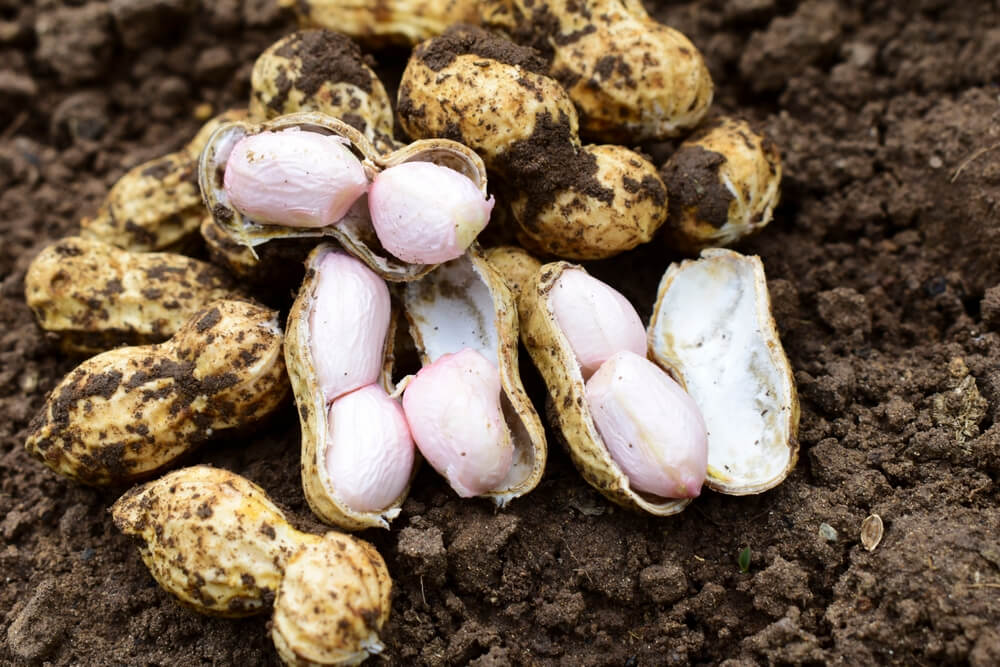
Crop rotation
Crop rotation is crucial for groundnut farming, as it helps rebalance soil nutrients and reduce the prevalence of soil-borne diseases, nematodes, and weeds. Maize, sorghum, pearl millet, or small grain crops are ideal follow-on crops, and you should avoid planting peanuts after tobacco or cotton.
Fertilizer application
The balanced use of fertilizer and manure delivers the phosphorus, potassium, calcium, sulphur, and magnesium needed for peanut growth. Before applying fertilizer, it’s important to assess your current soil nutrient status.
When using chicken manure, 10-12 tons per hectare is suitable, or 20 tons per hectare for decomposed farmyard manure. Manure should be mixed into the soil at least one month before crop sowing.
Seed layout and plot design are critical aspects of successful groundnut farming, and a well-thought-out plan ensures optimal peanut cultivation. Here's a detailed guide for groundnut sowing time and peanut cultivation:
Field Preparation for Groundnut Farming:
Begin by preparing comprehensive field maps that clearly indicate the arrangement of rows and spacing, incorporating your treatment plan for effective groundnut agriculture.
Select superior quality seeds with bold kernels, shelled just one week before groundnut sowing time. These seeds offer superior emergence rates, increased primary branches, leaves, dry mass, and ultimately, a higher pod yield.
Coat your groundnut seeds before planting using either Thiram® (a.i. 50% @ 3 g kg-1 seed) or Bavistin® (a.i. 50% @ 2 g kg-1 seed) to control pathogens and mitigate seedling diseases.
Depending on the peanut variety, space your seeds appropriately. For bunch varieties, 330,000 plants/ha (approximately one plant per 30 x 10 cm) is recommended, while for semi-spreading and spreading varieties, aim for 250,000 plants/ha (one plant per 40 x 10 cm).
If sowing by hand, organize the seeds into separate packets for each row. For machine sowing during groundnut farming, arrange these packets into groups of rows for a continuous sowing process.
Groundnut Sowing:
The commencement of the rainy season marks the ideal groundnut sowing time.
Before sowing, assess the soil to ensure optimum moisture content. If necessary, irrigate the field to achieve the desired moisture level for successful peanut cultivation.
Plant the groundnut seeds at a depth of 5-6 cm in the soil, compacting the soil around the seeds to establish firm moisture contact. A seed drill with packing wheels is the preferred tool, ensuring uniform germination and reducing groundnut sowing time.
In the case of manual sowing, assign the same individual to complete plots within each specific block to minimize variations in groundnut farming practices.
By following these guidelines for seed layout, plot design, and groundnut sowing time, you can optimize your peanut cultivation efforts, leading to a successful groundnut agriculture venture.
Irrigation in Peanut Farming
The negative effects of dry soil ● A lower crop growth rate: A water deficit in the first 67 days delays rapid fruit growth by 10 days and decreases yield. ● A water deficit during the flowering and pegging stages results in bigger yield losses than stress at any other growth stage. ● A water deficit during fruiting results in unfilled pods and less calcium concentration in the hull and seed. |
Effective irrigation ensures plenty of water is available in the upper 60 cm of soil, supporting high-yield and quality crops. During peak water-use periods your field may require 3-3.5 cm of water every five days to maintain soil moisture above 50% of field capacity. Irrigation intervals can be extended to 7-10 days during other periods.
During the pre-flowering stages, a moderate water deficit followed by irrigation will increase pod yields by 18-20%. During pod formation and seed development, soil water depletion should be maintained at 25% or -0.6 bars. This means that the upper 30 cm of soil should appear and feel moist and the plants should not wilt from lack of moisture during the afternoon.
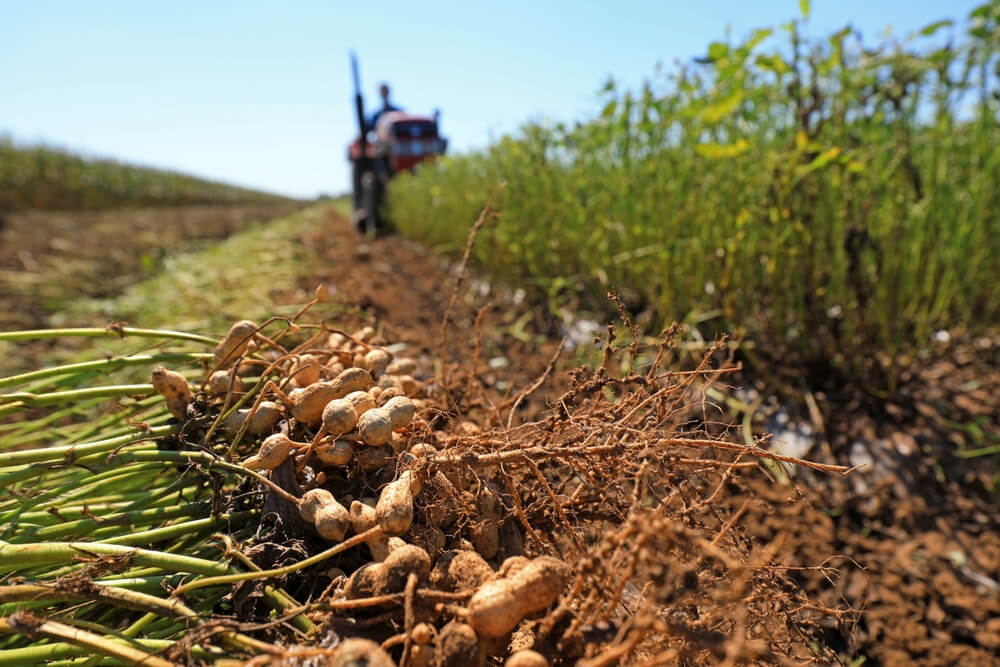
Weed Control
Weeds can be hugely damaging to peanut crops, especially during the first 45 days of growth, and can reduce yield by 30-60%. Mechanical and chemical weeding is therefore key.
Harvesting is a crucial phase in peanut cultivation, and adopting the right approach is vital to ensuring optimal yield and seed quality in groundnut farming.
Harvesting and Yield in Groundnut Agriculture:
Premature harvesting of peanut pods can lead to reduced yield, lower oil content, and compromised seed quality. Conversely, delayed harvesting may increase the risk of Aspergillus flavus infection (yellow mould) and aflatoxin contamination.
Optimal Peanut Harvesting Approaches:
Once you've determined that your peanut crop has reached peak maturity, consider one of the following three harvesting methods:
Apply sprinkler irrigation for one hour and manually pull the plants.
Provide light surface irrigation 2-3 days before harvesting, then use a blade harrow to cut the plant roots 12-15 cm below the soil surface before manually pulling the plants.
In situations where irrigation water is limited, use a plough or tractor-driven digger to loosen the soil, followed by manual removal of the plants.
Post-Harvest Drying Process:
Peanut Storage
After cleaning and grading, store the dry pods in gunny sacks and stack them up to 10 bags high in separate stacks so that air can freely circulate. The bags should be piled on wooden planks to avoid damage from dampness. Dusting the bags with 5% Lindane® will protect the pods from many storage pests.
Marketing your Peanut Crop
Finally, it’s time to sell your peanuts. Local peanut mills or government markets are great places to look for the best deals.
With the basics covered, you can make a clear plan for your peanut farm. There’s plenty more to learn about peanut farming: With the right knowledge, you can deliver the best yield when it’s groundnut harvesting time.
With over 17 years of experience in the peanut industry and numerous awards recognising his contributions, he founded Agrocrops in 2008, a leading global peanut company. His passion for peanuts drives his commitment to improving the industry for all stakeholders and promoting sustainability.
.png)
Published on 09/12/2025 in
.png)
Published on 04/12/2025 in
.png)
Published on 02/12/2025 in
(Custom).png)
Published on 02/12/2025 in
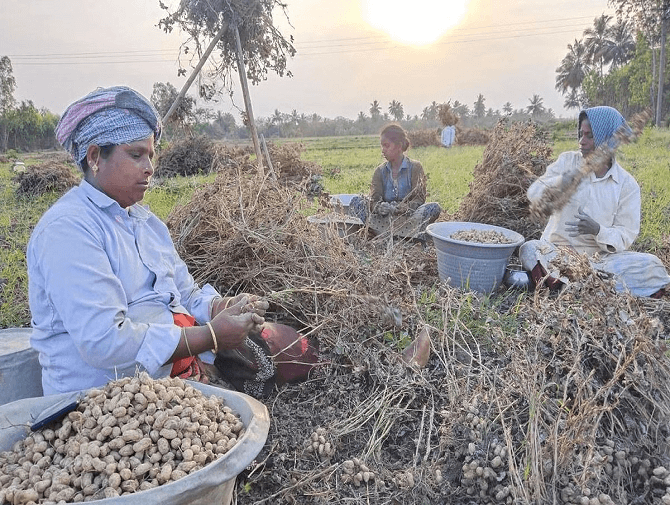
Published on 04/08/2023
.png)
Published on 04/03/2023
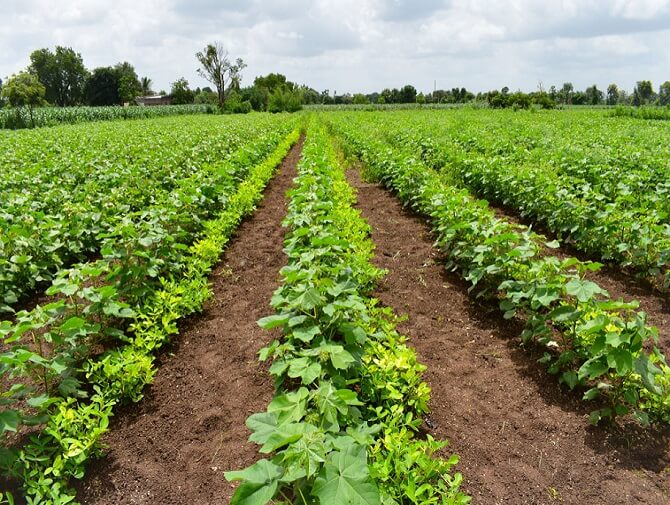
Published on 03/24/2023

Published on 03/24/2023
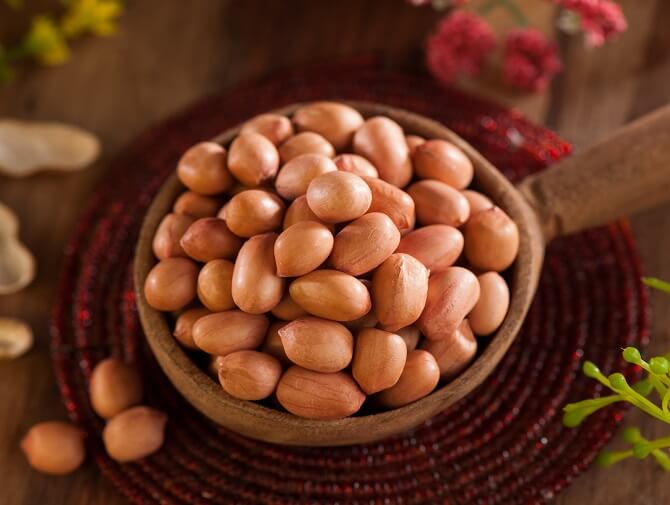
Published on 03/10/2023
